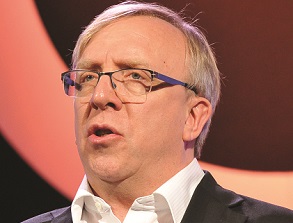Covid-19 update: 15 May
This week’s easing of some aspects of the lockdown measures in England, putting it out of step with other parts of the UK, met with a mixed reaction from the public and healthcare commentators.
Some welcomed the new freedoms and the first steps in re-opening up the economy, while others insisted the greater freedoms were premature.
Prime minister Boris Johnson said that encouraging those who couldn’t work from home to go to work (if their workplace was open) was a change of emphasis, rather than a major shift in policy. However, his recovery strategy also sanctioned people taking unlimited amounts of exercise and meeting up with one person from outside their household, while observing social distancing rules. And he called on schools to prepare for a possible phased re-opening from June, depending on the impact of the initial relaxations.
The move put England at odds with the wider UK, where lockdown restrictions remained in place.
Commenting on the 50-page recovery strategy, NHS Confederation chief executive Niall Dickson stressed the importance of not throwing away the gains made so far. ‘The plan contains welcome recognition that the biggest threat to life remains the risk of a second peak that overwhelms the healthcare system this winter, when it will be under more pressure and the NHS still needs to deliver non-urgent care.’
He reminded people that the NHS was still treating thousands of patients – Thursday’s government press briefing reported that there were 11,041 Covid-19 patients still in hospital – and added that there was still a ‘tragedy unfolding in care homes’. ‘We have not yet cracked the PPE challenge nor access to testing and we are not ready to roll out the test, track and trace strategy,’ he said.
Mr Dickson also raised concerns about the different messages being issued in the different UK nations around staying at home. Clear consistent messaging across the whole UK would give the greatest chance of success in beginning to lift lockdown measures, he said.
The government this week announced a further £600m for care homes to support infection prevention and control, channelled through councils. Local government secretary Robert Jenrick said the new Adult Social Care Infection Control Fund built on £3.2bn of earlier funding to councils to help meet the additional costs arising from the Covid-19 pandemic. He said the money would also be used to reduce rotation of staff between care homes.
Ian Hudspeth, chairman of the Local Government Association’s Community Wellbeing Board, said the extra funding would help councils’ public health teams to reduce and prevent coronavirus outbreaks. But he added that councils need more help and information to understand where outbreaks are happening. ‘The government needs to share this vital and up-to-date data with councils, as part of any contact tracing programme,’ he said.
Nadra Ahmed, chair of the National Care Association, called for clarity over the funding pathway. ‘Are we going to get it?’ she asked on BBC’s Newsnight programme. ‘Is it going to come to the frontline? The government has already released £3.2bn, which isn’t hitting our frontline.’
Just ahead of the new funding announcement, the association released a survey of more than 200 care providers, revealing three quarters of respondents had serious concerns about their viability – with empty beds not being filled adding to the pressure of rising costs. Two-thirds said they had not received notification of additional funding from their local authority. However, the survey also found that only 20% of those homes taking part were reporting Covid-19 in their services with on average 21% of their residents testing positive.
Figures from the Office for National Statistics on Tuesday showed that deaths in care homes are accounting for an increasing proportion of all virus-related deaths. A quarter of all deaths involving Covid-19 in the year to date (up to 1 May) have been in care homes. And for the most recent days the proportion has risen to more than 40%.
The increasing focus on care homes in no way means that the pressures on the NHS are over. However, it is increasingly clear that the service has navigated the first peak of demand created by the virus. Admissions are reducing. The 902 patients admitted to hospital on 12 May in England was 232 fewer than a week ago. And there has been a six percentage point fall in the number of critical care beds occupied across the UK in the same period. Just 20% of critical care beds are now occupied, although it should be remembered that this is one fifth of a significantly increased capacity brought on stream to support the NHS during the response.
Concerns about the rising level of unmet demand while the NHS has been responding to the coronavirus were underlined by A&E figures for April. The 917,000 attendances in April represented a decrease of 57% on the same month last year – the lowest number of attendances since the collections began. Emergency admissions were also down 39% compared with April 2019.
A new report from NHS Providers – The new normal – pointed out that hospitals in fact treated more patients without the virus than those with it during the response period, while it maintained emergency services. However, it said resuming the full delivery of all services, while continuing to treat Covid-19 patients and retain surge capacity, would be ‘complex and difficult’.
Trusts must also deal with a backlog of elective surgery along with significant other challenges including: the rehabilitation of patients who have survived Covid-19; increased demand for mental health services; and meeting the complex healthcare needs of nearly two million shielded patients.
They will face a number of constraints including difficulty in accurately forecasting how the virus will behave going forward and continuing uncertainty over a dependable supply of PPE. Testing remains a problem and there are significant capacity constraints in community and social care services. Staff will also need to be looked after with many exhausted after the recent relentless pressure. They will need time to recover and many will need and want to take leave as the year progresses – especially as leave has been restricted during the initial response.
NHS Providers chief executive Chris Hopson said the first peak of the virus represented just the first few laps of what will be a marathon. ‘Only now is the scale of the challenge for the rest of the race coming into view,’ he said. ‘Trusts will do all they can to restart services as quickly as possible. They will build on the innovations they've developed, like the 6,000 patient consultations a day now being delivered online, compared to 200 before the crisis.
‘But one key lesson from the pandemic so far is not to over promise. We must recognise that the NHS cannot deliver all that is now being asked of it. Expectations are already way ahead of reality. We need an honest and open debate on priorities and how quickly we can restart all NHS services.’
The Health Foundation, The King’s Fund and the Nuffield Trust also underlined the message that it will take many more months before NHS and social care organisations are able to fully restart services. Talking ahead of giving evidence to the Health and Social Care Select Committee’s inquiry into delivering core NHS and care services during the pandemic and beyond, the three thinktanks cautioned against underestimating the pandemic’s impact on already exhausted staff.
Plans to resume services needed to factor in the very real possibility of a second peak as well as planning for winter pressures. Among five key challenges, the bodies said the pandemic had ‘exposed pre-existing weaknesses, most obviously long-term underinvestment in health and care services and a precarious social care system’. It had also ‘laid bare deep-rooted health inequalities’ and these issues will need to be tackled alongside the backlog of demand.
Nuffield Trust chief executive Nigel Edwards (pictured) said there was no easy route back. ‘Unfortunately, that means people waiting much longer and some services being put on hold,’ he said. ‘Hospitals and a whole range of services provided in the community will have to be remodelled to control infection and keep people safe, by separating out coronavirus patients and testing constantly and quickly at every level. We must be honest that this will slow things down.’
Health unions also called this week for staff concerns to be addressed before any decision to bring back services to full capacity is made. In a Blueprint for return, the 16 unions – including the Royal College of Nursing and Unison – set out nine points that need to be addressed. These include a guarantee that there is enough suitable PPE to protect staff, extending current pay arrangements so that staff get paid for all the hours they work, and using the additional capacity provided by the Bring Back Staff initiative to support the rapid establishment of safe staffing levels.
A new operating framework was published towards the end of the week covering the delivery of urgent and planned services in hospital settings during Covid-19. This spelt out the very real challenges trusts will face in organising clinical activity. For example, on planned care, it says that patients should only be admitted if they are asymptomatic and have isolated for 14 days prior to admission. Where feasible they should also have tested negative prior to admission. And for urgent and emergency patients, trusts are being asked to immediately identify patients as asymptomatic, symptomatic or Covid positive, taking all appropriate infection prevention and control procedures.
Related content
We are excited to bring you a fun packed Eastern Branch Conference in 2025 over three days.
This event is for those that will benefit from an overview of costing in the NHS or those new to costing and will cover why we cost and the processes.